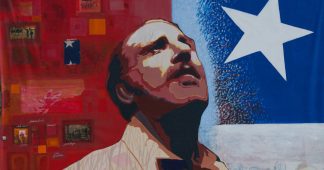We are in a new anniversary of the sad defeat of the Chilean process and the beginning of Pinochet’s bloody dictatorship in Chile. When the Chilean tragedy was coming in post-cordobazo Argentina we made a very numerous demonstrations asking for “arms for Chile carajo”. It’s just a memory. Now is the time to reflect on one of the various lessons of that defeat. Is not the same situation; unhappy we haven’t a government like Allende how to stop at that moment to the right and fascism. An issue that is topical in the face of the advance of totalitarianism and the pro-fascist right in the world and in Brazil.
Allende’s government
As part of the process of ascending mass struggle in the Latin American Southern Cone in the 1970 general elections in Chile, Popular Unity triumphed, a front between the Socialist Party and the Communist Party, along with the Christian Left (which was a division of Freire’s bourgeois party that had been president), and other smaller groupings. That triumph was made possible by the fact that The Conservative Party and Christian Democrat Party, the two big bourgeois parties, were divided in the elections.
There is an idea in many sectors of the current Brazilian and world vanguard that, with Allende’s government, it was already a socialist government, and that this shows that it is possible to have a peaceful path to socialism. Allende’s government was an anti-imperialist government, with deeper radicalization features than Chávez’s government in Venezuela was, but it was not a government of rupture with the bourgeoisie. Chile was in great revolutionary turbulence, but the state remained bourgeois, particularly because his army was not touched by Allende’s government. Allende’s government opened a revolutionary situation in Chile, but this situation was unfortunately broken by Pinochet’s military coup of September 11, 1973.
The victory of the Popular Unity opened a situation of mass effervescence and struggle for their demands. Allende’s government took enormously progressive measures against imperialism. It nationalized the copper mines, the most important economic resource of the country, made agrarian reform in sectors of the countryside quite productive, nationalized other factories and implanted a system of mixed production and cooperatives. It nationalized the banking system and began profound educational reforms.
We could not say that it was a really government of the workers, since the Communist and Socialist Parties were in power along with a party product of a division of the Christian Democratic Party. But this is not the main problem. Despite profound transformations, the structure of the State was not modified and a fundamental institution, the Army, remained the same. Pinochet was commander-in-chief appointed after the first failed coup attempt against Allende’s government.
In reality this government became a sandwich between the mass movement that wanted to radicalize the process towards socialism and the bourgeoisie and imperialism that began to harass him on the right. Faced with such an advance by the right, the workers began the process of self-organization of the industrial cords – which were Soviet forms of organization from the factories. Something similar was happening in the popular neighborhoods. In many factories, under pressure from the right that launched a truckers’ strike, weapons were produced. The workers saw the confrontation as inevitable and prepared themselves for it. In the army there was a process of organization of the soldiers raising against the military conspirators especially after the first coup attempt. Allende remained the defender of “institutionality,” we even insisted, naming Pinochet as commander-in-chief of the Army.
Allende’s well-known gesture photographed confronting with a machine gun the bombing of the La Moneda Palace does not extinguish the fact that he had in his hands all the possibilities of facing the coup not only with a machine gun in his hands, but facilitating – and not obstructing – the armament of the workers and the people (The government requisitioned the weapons in the factories days before the coup). That would have meant placing power in the hands of the workers and the people to advance the socialist revolution. And that was what Allende did not want to do.
The pacific way to socialism was the word of order that the communist parties used throughout the continent. This strategy was used to say that legality should be maintained in Chile, and it should be maintained for not provoke the right and to continue advancing through an institutional course. This path, chosen mainly by the Communist Party, proved to be quite wrong. The government called for pacification to avoid bloodshed, but the blood was greater on the hands of Pinochet’s dictatorship.
The current situation of Chile and the entire continent is different. We are at another level, far from a revolutionary situation in Brazil and on the continent. We are in a stage of accumulation of forces. But in the future the revolutionary situation would come, and we must learn lessons from the Chilean tragedy so that it does not happen again.











